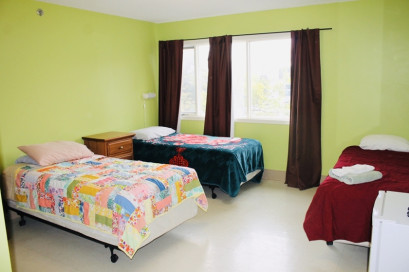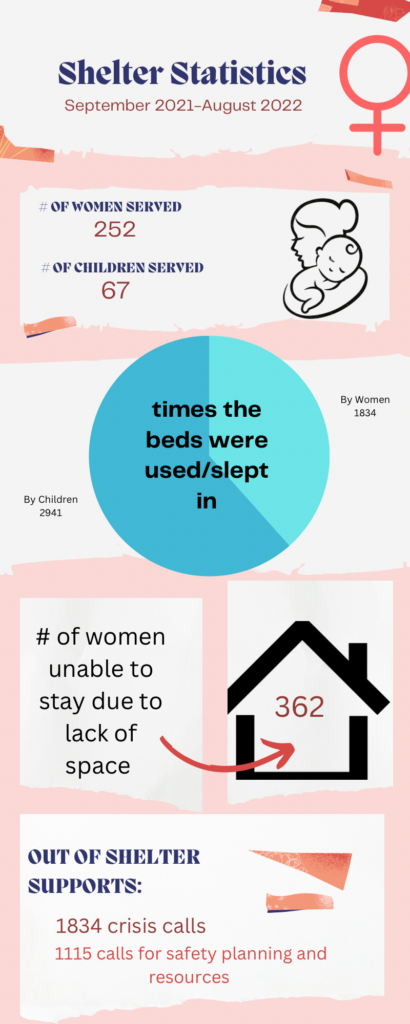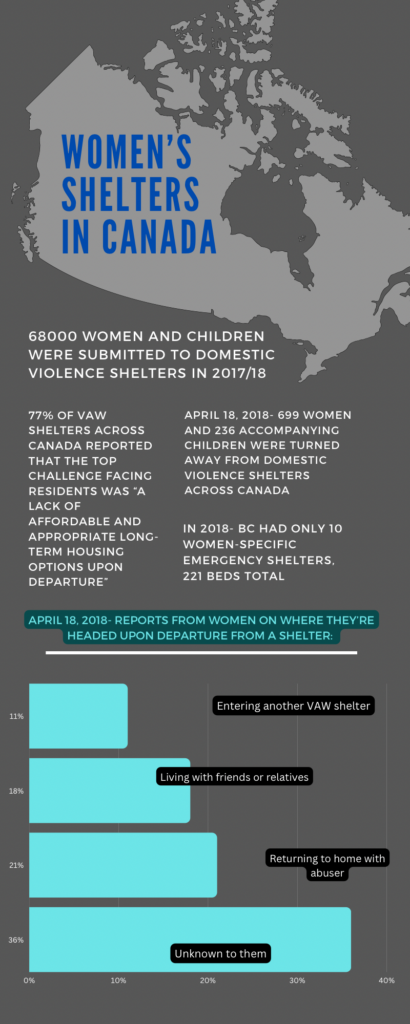The Y Women’s Emergency Shelter
Category: Emergency Housing | Author(s): Nicole Perry

Image Credit: YMCA-YWCA website
Location Address: 750 Fortune Drive, Kamloops, BC, Canada
Subject
The Y Women’s Emergency Shelter has had its name for years which is why it’s linked to the idea of an emergency shelter, a theme it fits into, however it is more accurately defined as a transition house. As Jacquie Brand, General Manager of the Violence Against Women Intervention and Support Services Department of the Kamloops YMCA-YWCA, puts it, “we provide transitional housing for women and children who have fled violence in their homes.” The shelter is mandated for thirty day stays yet Jacquie says their clients’ stays are often ninety to one-hundred-twenty days.
Further services offered by the shelter include outreach support that Shanna Fehr, Housing Outreach Worker with the YMCA-YWCA, defines in the video below. She attests that “the help that we’re able to give, even though short term, is incredibly helpful” in regards to the challenges faced by anyone starting anew with their living situation. “To live in a new place is a lot, you need to buy all of your basic groceries, garbage bags, all these household items. And with the damage deposit and first month’s rent, that’s a lot of money to pay out of pocket at one time”; Shanna says often the women they help don’t have access to the money they need due their partner’s control of the finances, and her work offers them help with start-up costs.
To run a shelter and offer support services takes funding, which is reliant on community support and involvement. As told by Jacquie, the YWCA was established in the 1970s and the Y Women’s Shelter started running in the 1980s, following a time of assistance to women through basement stays without the means of an emergency shelter. During the early days, Jacquie presumes the challenges of finding funding was a large operational roadblock, as a non-profit organization. “In 1992 it was still legal to rape your wife”, Jacquie explains, “so in that context, [people didn’t value] the idea that there would be government funding for a place for women to go who should just know their place.” Following changes in mindset she’s observed over her nineteen years working with the shelter, she reveals it now has consistent funding from B.C. Housing, offered in three year contracts, but without the help of funding from the community, only minimal services would be offered to the women served.
As identified in a 2020 study, the topic of women fleeing violence is often not even looked at as a housing crisis, which is detrimental to the accessibility women fleeing violence have to housing supports that are geared towards their needs. Forced to stay in shelters that can’t fully assist them results in “many women remain[ing] trapped in traumatizing situations of homelessness and violence.” In Kamloops, for example, staff of the Y Women’s Emergency Shelter state that it’s the only emergency shelter for women and children fleeing violence, and mandated for temporary stays, they can only assist with housing support to a certain extent. Jesanne Stanko, Director of Programs for Violence Against Women Prevention Support Services with the YMCA-YWCA, speaks on the topic of housing insecurity as a reason women stay in abusive situations, saying “not having access to housing becomes barrier for women leaving violence.”
Crisis
The access to safe and affordable housing that women don’t have immediately after leaving an abusive situation is a large part of the crisis faced by the demographic of those affected by gender based violence, specifically women and their children. The departure from a shelter that can’t offer full-time support is rocky when there’s an inability to find sustainable housing opportunities, a large issue in Kamloops as identified in the infographics below.
At the Y Women’s Emergency Shelter, there is incredible support offered to women who have just fled an unsafe home, but they are limited by the amount of space they have; “we have seven bedrooms and twenty-three beds and they are almost always full” Jacquie reveals, and says the next step is creating safety plans for those who can’t stay because of this issue. Jesanne expands further on the topic to explain that “once people move on those spaces are filled within twenty-four to forty-eight hours.” Jacquie touches on supports that can be provided to those who are unable to stay with them such as phone, drop in, and outreach support, but attests that having a larger number of transition houses in Kamloops would be amazing.
The shelter has methods of supporting women when capacity becomes an issue but there’s challenges that come along with trying to provide these services. As a general rule, Jacquie says, “we try to support families first of all because they’re the most challenging to find space for and it’s really important to us that the moms and kids stay together especially in this time of crisis and trauma.” For the women who are turned away from the shelter, “we would go back and see if there’s a chance they could stay with friends and family safely, sometimes they will need to go to other communities which is really challenging because their supports are normally in the city that they live in,” although the shelter does communicate with other transition houses in the surrounding area to better plan for these instances. If the women are out of options and are forced to stay with their abuser, Jacquie says the shelter helps the women create safety plans for “stay[ing] the safest possible in that home.” Ideally, nobody would have to continue living in a harmful situation, but unfortunately, with the crisis at hand, options for safe housing are sometimes inaccessible.
With the vacancy rates and prices for rentals in Kamloops being what they are, women entering the housing market without being able to plan for it are unable to find sustainable housing. Jesanne speaks on the struggle in Kamloops of finding safe, affordable housing opportunities, needed by people that come through the Y Women’s Emergency Shelter. She also had something to say about how “Kamloops doesn’t have a lot of development opportunities”, making the community unable to meet the need for second-stage housing and support options that could assist greatly in the rebuilding of women’s lives after fleeing violence. As she says in the video below, the lack of affordable housing or second-stage housing for women to transition into from the shelter leaves less room for newcomers because clients are forced to stay longer than what’s mandated.
Video Credit: Nicole Perry
Community Implications
When it comes to housing challenges accompanying the act of leaving abusive homes faced largely by women, people don’t always realize the impact this crisis can have on them and anyone else. As mentioned before, without a sufficient number of transition houses in Kamloops, women are forced to find accommodations elsewhere, often with friends or family members. If someone in your life is being abused and you don’t know it, you could end up with an unexpected house guest. Accommodating someone else for an unknown period of time can be challenging, especially when they have specific needs. Jacquie mentions that the Y Women’s Shelter has recently seen a lot of seniors, an age demographic that we need to consider can face the same challenges of domestic violence, but often require extra support from anyone willing to take them in.
Jesanne’s thoughts are incredibly relevant to defining community implications; “gender based violence is not a topic that only affects certain individuals in the community.” As someone involved with sheltering women that have faced violence, she gives credible information on how it “spans across all sets of classes, it happens in our workplaces, to people that we work with, it happens in our schools, the kids that go to school with our kids, it happens just about everywhere.” Many people, of a vast demographic, find themselves facing domestic violence. When we look at the topic as outsiders, we have to realize this crisis can affect us at any second whether it be to ourselves or someone close to us; as Jesanne puts it: “nobody is not impacted by it.”
Information for infographics created by Nicole Perry below retrieved from the City of Kamloops and Schwan et al.
Images of shelter, captioned as so, from YMCA-YWCA website
Click or press on images to expand.
A Way Forward
We recognize that no one suggestion will solve the housing crisis in Kamloops, but based on our research, here are some ideas that may help move us even slightly forward.
Having consistent funding and community support for the shelter is excellent, but being reliant on community funding could cause issues if people become less aware of the needs women fleeing violence have. In the case of the Y Women’s Emergency Shelter, the last ten years have consisted of finding methods to educate the community which have been successful in increasing community support.
Jacquie says they’ve done education and awareness pieces to accomplish this; if these pieces have helped with community funding, it could be possible to use the process of educating people fully to help build a wall of support putting pressure on those in charge of developing second-stage housing. Jesanne’s thoughts are: “the community and other service providers can really put pressure on those larger systems [that control development etc.] to address and vocalize the needs of our community for this type of service.”
Second-stage housing is the largest gap Jacquie identifies as something that needs to be filled. She mentions, “we don’t actually have our own second-stage housing, Elizabeth Fry has second-stage housing” and with more of that transitional support, new clients could fill spaces that longer-term clients have taken up while having to wait for sustainable housing opportunities. Jacquie has ideas on how second-stage housing with supports in place could be implemented if the funding to run it was accessible, something placing more importance on this issue could help solve. She says, “I don’t completely understand how it goes but I know there is, in some cities, when you do build housing, there has to be a certain amount of subsidized units within your housing development, and it would be great if we had a lot more partnerships like that so if somebody’s building a new building, if there could be a floor that was, say, the Y second stage housing, that would be amazing.”
As for financial and developmental support, “I don’t think the government could do it all, that would be great if they could” Jacquie vocalizes. “People aren’t always okay with tax increases”, another way funding could be acquired if everyone understood the importance of this gap in services. “There has to be a real community aligned view and support system in place to help everyone” she continues, after highlighting the importance of big business developer involvement.
It’s difficult to have only one transition house in Kamloops that can’t offer second stage housing or secure affordable housing for clients; more room for longer term support is essential. In Jacquie’s words, “each juncture and step that she’s moving along, if she had that continued support, it would make a lot of difference.”







